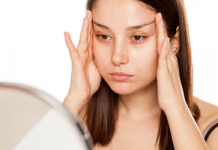In hot weather, one can not only get overheated, but catch a cold because of the temperature difference and suffer from dehydration… How can one avoid these common summer problems?

What Causes Heat Stroke?
Heat stroke occurs in case of general overheating, and most often – because of physical activity in the heat. The risk is doubled when humidity is high.
Heat Stroke Symptoms
The first symptoms of heat stroke are lethargy, drowsiness, and dizziness. The body temperature can exceed 41 degrees. The overheated person has a reddened face, feels frequent palpitations, complains of nausea, and may have diarrhea. In this case, he is on the point of losing consciousness.
How to Prevent Heat Stroke?
Avoid intense physical activity in hot weather and reduce the intensity of your workouts. Wear light and well-ventilated clothes and do not overeat. Drink plenty of liquid.
Heat Stroke in Heart Cases
Heat is twice the torture for hypertensive patients: it is harmful for them to drink plenty of liquid, after all. The only way out is to take all the prescribed drugs, drink small portions of mineral water or green tea often, and look for a cool place.
How to Help a Heart Patient?
The first aid in case of a heat stroke. If you are just “boiling”, you need to quickly remove all the possible clothes, lie down, drink cold water, and wipe your body with a cold damp cloth. And be sure to measure the temperature, pulse rate, and blood pressure. If the patient has lost consciousness, the main thing is to quickly lower the body temperature to 38 degrees with all means available. And of course, we should immediately call an ambulance.
Sun Stroke Causes
Sunstroke occurs when direct sunlight causes overheating of the head and the brain in particular rather than of the whole body.
Sun Stroke Preventing Summer Nutrition Tips
Many of us do not know that the risk of overheating can be significantly reduced through proper nutrition. When the weather is hot, diversify your diet with fermented milk products, but you’d better not eat porridges since they increase blood acidity. On particularly hot days, eat 35% of the daily diet for breakfast, 25% for lunch, and 40% for dinner. Dinner should be big, but light: fruits, vegetables, herbs, a little seafood or lean fish.
Sun Stroke Symptoms
The first symptoms of sun stroke are redness of the face and a severe headache. Nausea, dizziness, blackout, and finally vomiting are the next to appear. The result could be loss of consciousness.
Sun Stroke Prophylaxis
It’s simple: take care of the head. What do you like most of all – a cap, a scarf, or a shawl?.. Whatever you wear on your head, the main thing is that it should be light. It is even simpler on the beach: dip under the water from time to time or take a shower.
What To Do in Case of a Sun Stroke?
Having noticed the first signs of a sun stroke, hide in the shade and drink cool water, cover your head and forehead with a kerchief soaked in cold water. If the stroke is grave, it is best to pour some cool water over the patient and call an ambulance as quickly as possible.
Dehydration Treatment Tips
Many people have blunted thirst sensation, and so they face the risk of dehydration. If you rarely want to drink, be guided by the rule of drinking at least 1 cup of water a day for each 30 cm of your height. In the heat, this amount is doubled.
First aid in case of dehydration. Everything is simple: lie down and drink (at least 1.5 liters of carbonated mineral water). If you do not feel well, it is better to call an ambulance: only a doctor can determine the degree of dehydration, and give you a dropper with salts and electrolytes if necessary.










